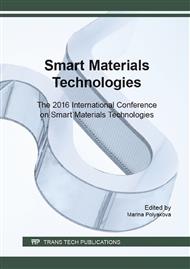[1]
A.D. Buck: Recycled concrete as a source of aggregate, ACI, Vol. 74(5) (1997), p.212–219.
Google Scholar
[2]
J.Z. Xiao: An overview of study on recycled aggregate concrete in China (1996–2011), Constr Build Mater, Vol. 31(2011), p.364–383.
Google Scholar
[3]
J. Shi: Estimation and forecasting of concrete debris amount in China, Resour Conserv Recycling, Vol. 49 (2006), pp.147-158.
DOI: 10.1016/j.resconrec.2006.03.011
Google Scholar
[4]
J.R. Correia: Effects on concrete durability of using recycled ceramic aggregates, Mater Struct, Vol. 39 (2006), p.169–177.
DOI: 10.1617/s11527-005-9014-7
Google Scholar
[5]
J. Brito: Mechanical behavior of non-structural concrete made with recycled ceramic aggregates, Cem Concr Compos, Vol. 27 (2005), p.429–433.
DOI: 10.1016/j.cemconcomp.2004.07.005
Google Scholar
[6]
M. Gomes: Structural concrete with incorporation of coarse recycled concrete and ceramic aggregates: durability performance, Mater Struct, Vol. 42 (2009), p.663–675.
DOI: 10.1617/s11527-008-9411-9
Google Scholar
[7]
F.M. Khalaf: Using crushed clay brick as coarse aggregate in concrete, Mater Civ Eng, Vol. 18 (2006), p.518–526.
DOI: 10.1061/(asce)0899-1561(2006)18:4(518)
Google Scholar
[8]
C. Medina: Gas permeability in concrete containing recycled ceramic sanitary ware aggregate, Constr Build Mater, Vol. 37 (2012), p.597–605.
DOI: 10.1016/j.conbuildmat.2012.08.023
Google Scholar
[9]
J.M. Khatib: Properties of concrete incorporating fine recycled aggregate, Cem Concr Res, Vol. 35 (2005), p.763–769.
DOI: 10.1016/j.cemconres.2004.06.017
Google Scholar
[10]
A.V. Alves: Mechanical properties of structural concrete with fine recycled ceramic aggregates, Constr Build Mater, Vol. 64(2014), p.103–113.
Google Scholar
[11]
H.W. Song: Service life prediction of repaired concrete structures under chloride environment using finite difference method, Cem Concr Compos, Vol. 31 (2) (2009), p.120–127.
DOI: 10.1016/j.cemconcomp.2008.11.002
Google Scholar
[12]
S.C. Kou: Compressive strength, pore size distribution and chloride-ion penetration of recycled aggregate concrete incorporating Class-F fly ash, Wuhan Univ Technol – Mater Sci Ed, Vol. 21(4) (2006), p.130–136.
DOI: 10.1007/bf02841223
Google Scholar


